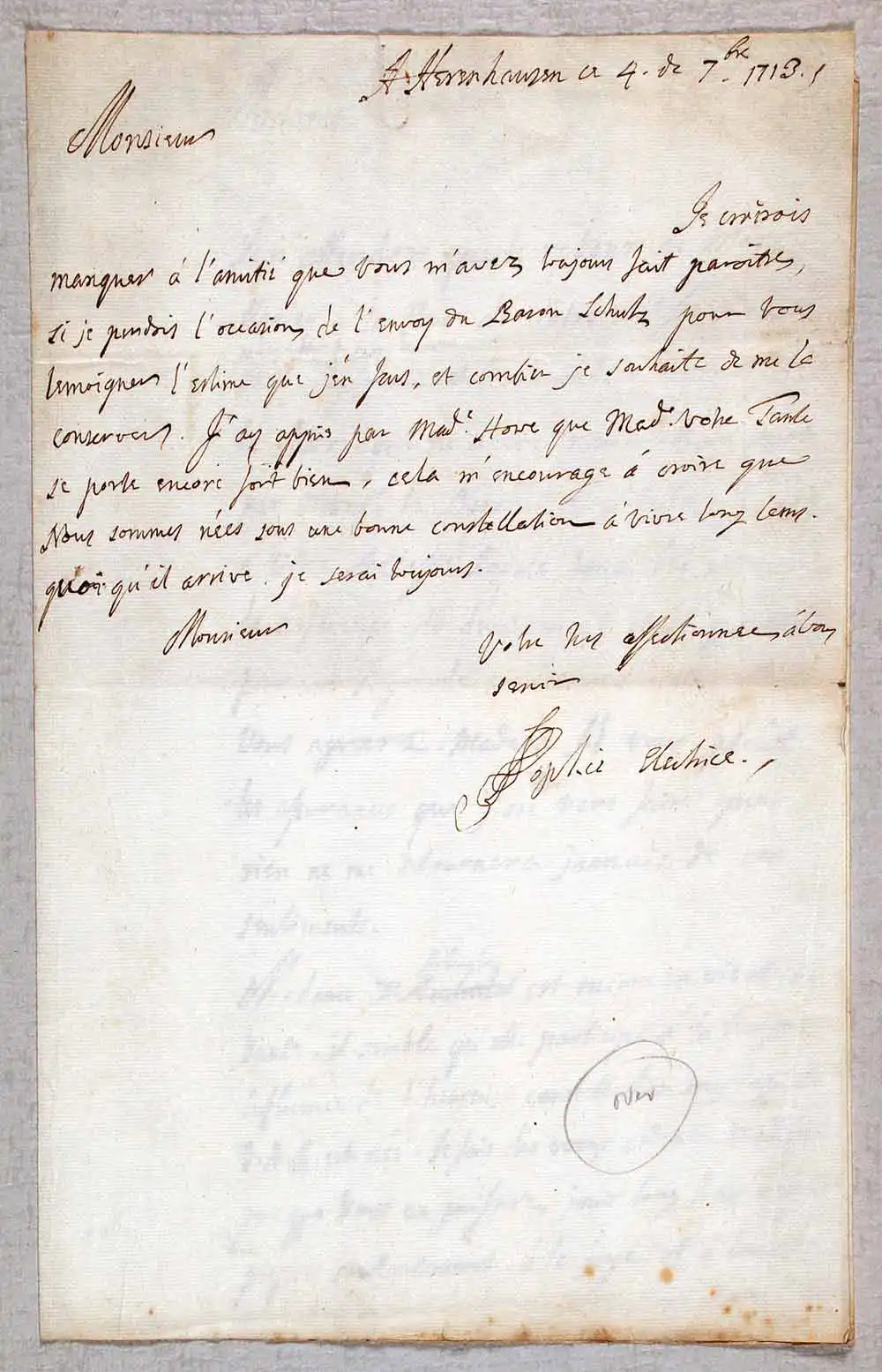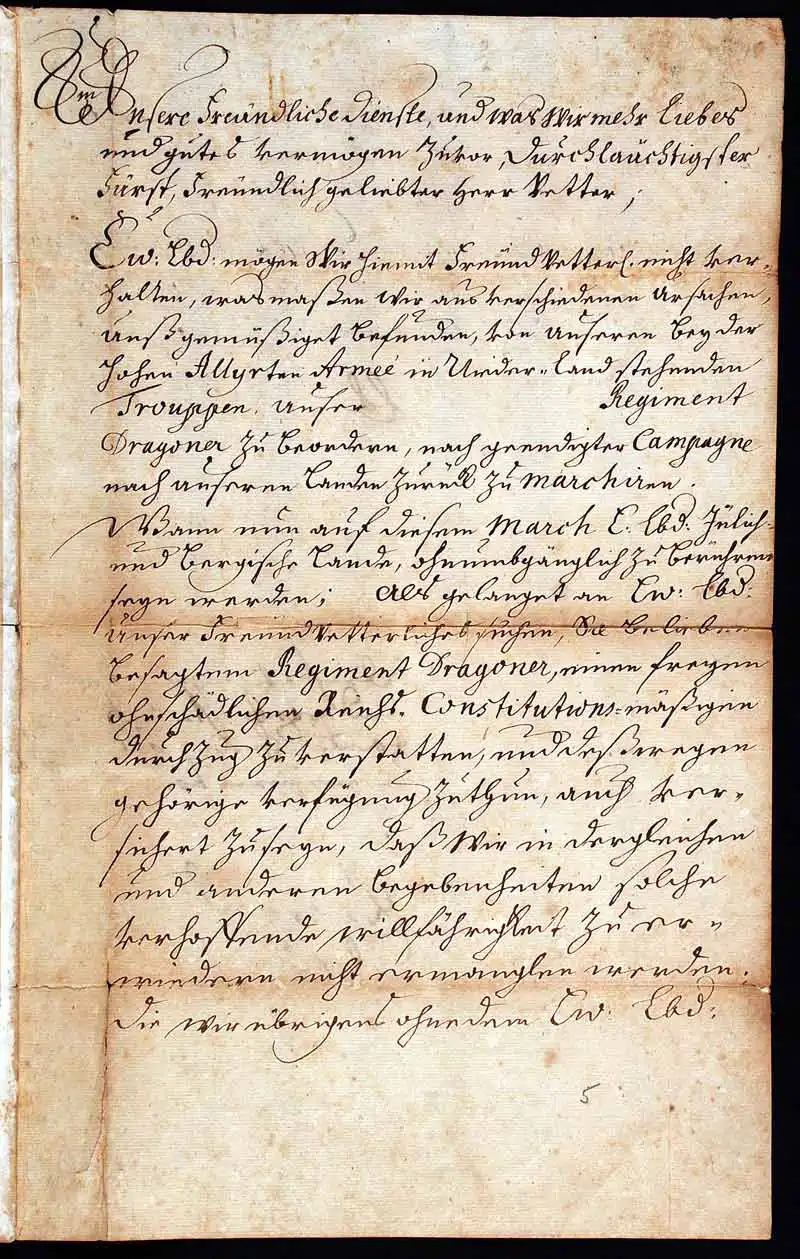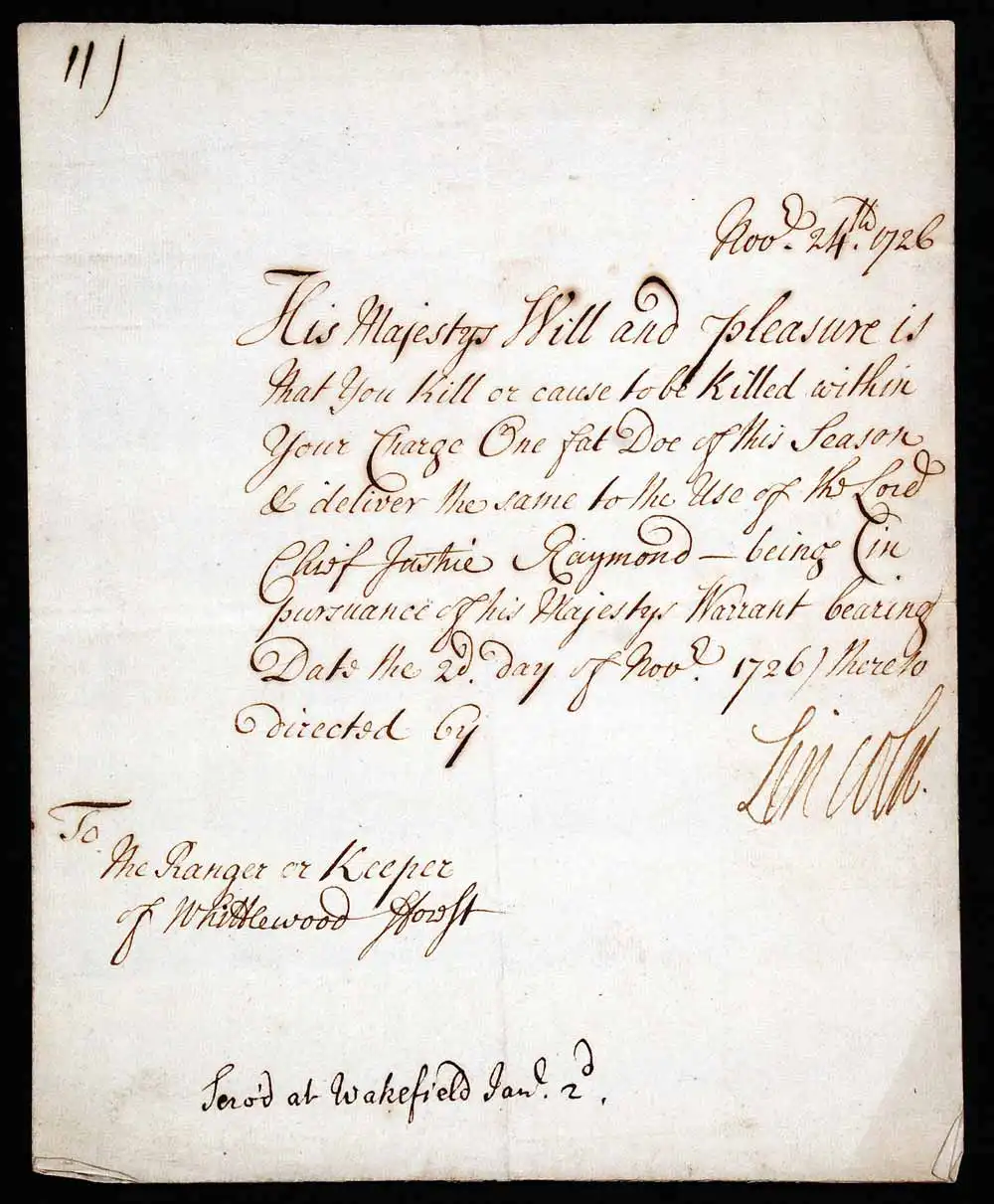Case 2
- Sophia & George I

Letter concerning Baron Schutz and the recipient’s family, in French, signed. Sophia, Electress of Hanover (1630–1714), to ‘Monsieur’, Herrenhausen, 4 September 1713.
Though never a member of the British Monarchy, Sophia, granddaughter of James I and the mother of the future George I, was heiress presumptive to the crowns of Great Britain and Ireland. In 1701, Parliament passed the Act of Settlement which declared that in the absence of a legitimate heir from William III or Anne, the crown was to pass to Sophia, a move designed to cut off any claim to the throne by the Catholic James Francis Edward Stuart. Unfortunately, Sophia, who lived to be eighty-three, died in 1714 just a few weeks before the much younger Anne, never setting foot in England. Had she outlived Anne, Sophia would have been the oldest person to ascend to the British throne.
The letter, to an unknown recipient, reads:
Herrenhausen, Sept. 4, 1713.
Dear Monsieur
I deserve to lose the friendship which you have always shown me, if I missed the occasion of the envoy of Baron Schutz to show the estimation which I feel for you, and to show how I intend to maintain it. I have learnt from Mad. Howe, that your aunt is still in the best of health. That encourages me to believe that we are born under a lucky star, to live for a long time, despite everything.
I always remain, Monsieur, yours very affectionately, at your service
Sophia Electrice.
Ludwig Justus Sinold von Schütz (1689–1713), was a Hanoverian Envoy in London.

Letter concerning Baron Schutz and the recipient’s family, in French, signed. Sophia, Electress of Hanover (1630–1714), to ‘Monsieur’, Herrenhausen, 4 September 1713.
Open image in new window

Document concerning troop movements, in German, initialled. George Ludwig, Elector of Hanover, later King of Great Britain (1660–1727), to Johann Wilhelm Pfalzgraf (1658–1716), Herrenhausen, 17 September 1711.
With the death of his mother, Sophia, the British crown passed to her eldest son, George Ludwig, who ascended to the throne in August 1714. He repaired to England from Germany the following month and was crowned George I in October. His rule was challenged early by Anne’s Catholic half-brother, James Francis Edward Stuart, who, with his supporters (known as Jacobites), unsuccessfully attempted to depose the new king. It was during the reign of George I that Britain began to transition towards the modern system of cabinet government led by a prime minister (see wall carrel 1, Sir Robert Walpole).
George was three years away from his accession to the British throne when he wrote this letter. It is addressed to his cousin Johann Wilhelm Pfalzgraf, Elector of the Palatinate and Palatine. George declares in the letter that he will order his troops (a regiment of Dragoons) back from the Netherlands to his own country, as soon as the campaign of the Allies in the Netherlands is finished, which presumably refers to the War of the Spanish Succession. Though the handwriting is difficult, it appears that George then requested permission for his regiment to move through the territories of Johann Wilhelm, referring to the Reichs-Constitution or constitutional rules of the Holy Roman Empire. The letter concludes with George informing Johann Wilhelm that he will grant similar permissions for Johann Wilhelm's troops in the same situation should the need arise.

Document concerning troop movements, in German, initialled. George Ludwig, Elector of Hanover, later King of Great Britain (1660–1727), to Johann Wilhelm Pfalzgraf (1658–1716), Herrenhausen, 17 September 1711.
Open image in new window

Warrant for the killing of one doe. George Clinton, 8th Earl of Lincoln (1718–1730), to the ‘Ranger or Keeper of Whittlewood Forest’, 24 November 1726.
This royal warrant was issued less than a year before the death of George I. It charged the ranger or keeper with the task of killing ‘One fat Doe of the Season’, and delivering it to the Lord Chief Justice, who was then Sir Robert Raymond (1673–1733), later made 1st Baron Raymond during the reign of George II.
Whittlewood Forest is a former royal hunting ground located in Northamptonshire.

Warrant for the killing of one doe. George Clinton, 8th Earl of Lincoln (1718–1730), to the ‘Ranger or Keeper of Whittlewood Forest’, 24 November 1726.
Open image in new window


